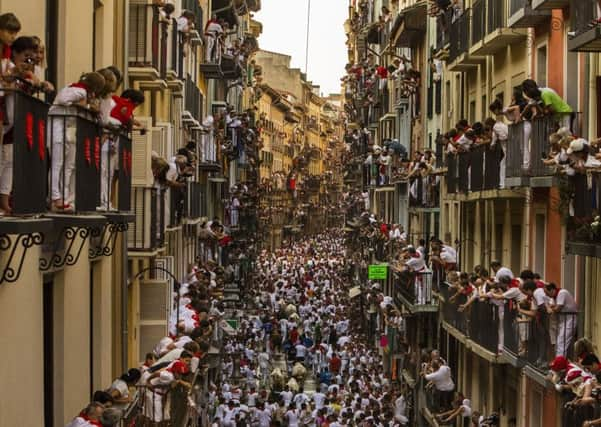Travel review: Pamplona - Spain on the hoof


The hotel receptionist had a rather formal manner that soon relaxed into a smile when I answered her question. Was I in Pamplona for business or pleasure? I was in the city for a few days to explore and to experience the place without the famous bull running.
“Oh,” she said, “that’s great, we have so much to see.”
Sitting close enough to the Pyrenees, Pamplona is fairly easy to visit from the south of France. A leisurely two-hour drive over the border from Bayonne with a stop for coffee (a lot cheaper on the Spanish side) and the city rolls into view.
Advertisement
Hide AdAdvertisement
Hide AdMy hotel was in the old town area and all the sights were a stroll away. First impressions were of a green oasis. The city has plenty of cool shaded areas and parks to sit in and relax tired feet, numerous bars and cafes for the body and wonderful buildings and architecture for the mind.
With no particular itinerary to stick to, I just ambled along streets and alleyways, keeping on the sunny side, waiting to see what the next junction brought into view. It wasn’t too long before I came across the city walls, which are hard to miss. Around three-quarters of the walls remain and they were made a national monument in 1937 and it’s here where you’ll find a few parks and gardens to enjoy.
In the south-west of the old town, on Avenida Ejército, is the citadel. A pentagonal design, it has three of its five defensive bastions remaining from construction that started in 1571. Used now for housing exhibitions, the fortification is surrounded by green space. One of the most popular is Taconera Park, where some of the city’s more senior residents were sitting on benches in the shade, reading papers and just relaxing. I got the impression that each bench would host the same person at the same time every day. There are formal planting areas bursting with colour and open spaces all reached by paths. I retraced my steps, past shops with traditional hams hanging in the windows, to the Cathedral of Royal St Mary, which dominates the area and is found in the Calle Curia.
The facade is Neoclassical, designed in the late 18th century, and leads to an ornate 15th century Gothic interior. Outside is the medieval cloister and leading from it are a museum and treasury that house paintings, sculptures and religious items.
Advertisement
Hide AdAdvertisement
Hide AdI didn’t stay too long as there was a photographic drone in operation for an architectural video shoot, spoiling the peace and quiet. It was time for a break and a drink. There are many cafes for the traveller to revive the body, the soul having been taken care of, and a chilled beer was just the job.
Yorkshire boasts some fine town halls but the one in Pamplona is a work of art. Standing in the Plaza Consistorial, the sandstone building, renovated in the 18th century, has a Baroque facade with the trumpet-blowing figure of Fame standing on top guarded by lions. Its balconies are decorated with floral displays and the flags that hang in the gentle breeze add a splash of colour.
The social centre of the city is the Plaza del Castillo, a spacious public area used for public events, dancing and music. In the centre stands a stone bandstand. Three, traditionally dressed musicians, did their best to entertain passers-by heading for an early dinner in one of the many restaurants nearby. In another corner appeared a spontaneous dance that stopped as quickly as it started.
The square, full of families enjoying the evening atmosphere, is surrounded by apartments and no-one appears to mind if children are running around. It’s the place to be seen and to see, especially sitting at a cafe sipping coffee. Life seems to slow down in the square as residents and visitors mingle – after all, there are no bulls thundering by.
GETTING THERE
Advertisement
Hide AdAdvertisement
Hide AdMike travelled from Portsmouth to Le Havre with Brittany Ferries (mid-season prices start from £89 one way for a car plus two) and returned from Santander in Spain to Portsmouth (mid-season prices start from £334 one way for a car plus two, with en- suite cabin). Book online at www.brittanyferries.com or call 0330 159 7000.